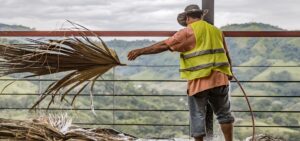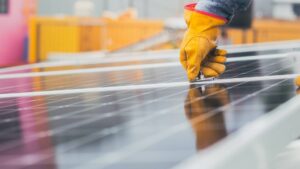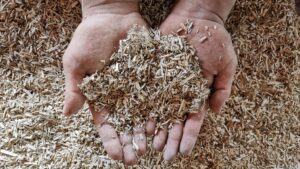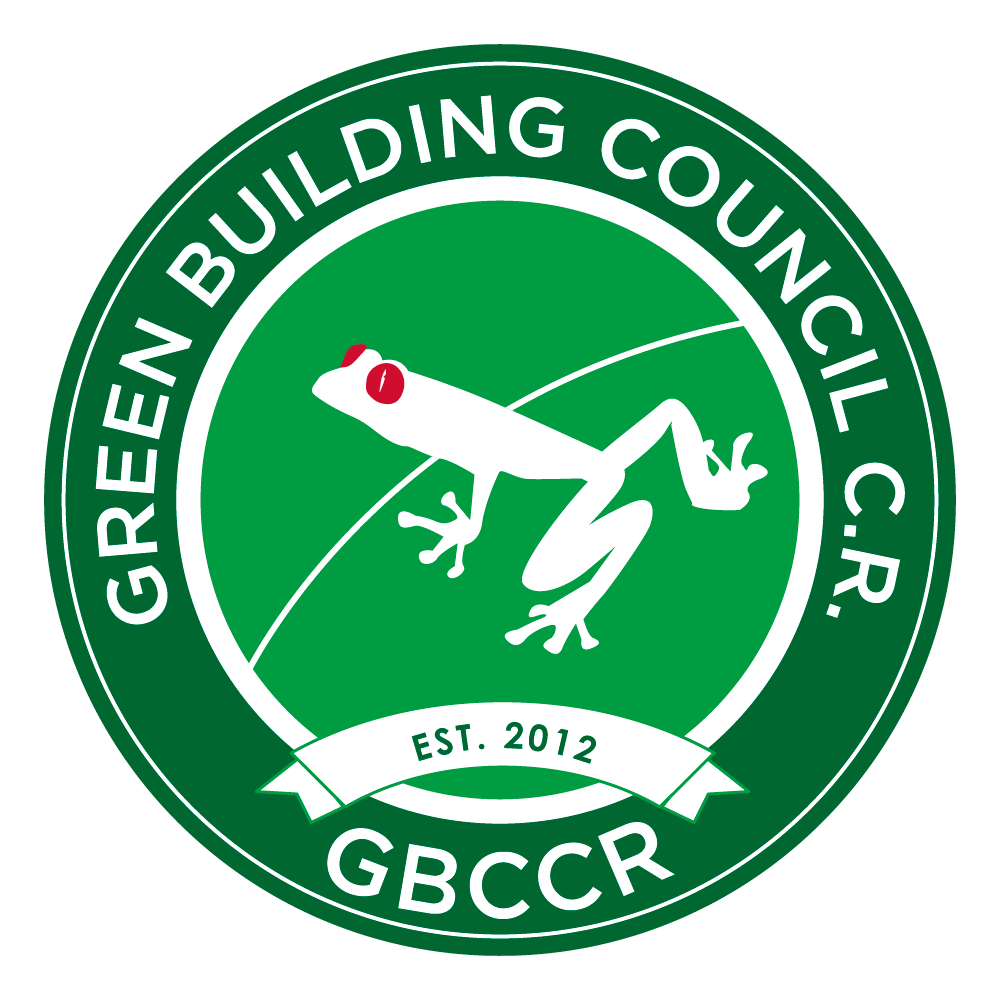It grows really fast
Bamboo is a regenerative plant, which means it has two essential qualities. The first is that it grows extremely fast. After its initial cultivation process of five or six years, it can be harvested. Subsequent harvests are continuous over time once the new canes reach maturity.
The second quality is that each time it is harvested, the bamboo re-sprouts with even more strength. This is especially true when harvesting during the waning or new moon. At this time of the month, water descends to the root, which generates favorable conditions for new shoots and, at the same time, reduces the water in the harvested plant, preventing pests from emerging.
With proper treatment, it resists pests
It is often said that bamboo is resistant to pests; this is true as long as it is treated correctly. The process begins with the butcherie, a technique that aims to replace the sap inside the plant. It should be performed within 12 hours of harvesting and consists of injecting saline solution through the internal canals. The solution pushes the sap out of the bamboo. Once the process is complete, the plant is left to dry for four to six weeks, to finish with a protective treatment against humidity and fungus.
It is strong, elastic, and light at the same time
The tensile strength of bamboo is up to 400N/mm2; some fiber-resistant woods reach a maximum of 50N/mm2. In addition, it is relatively light due to its hollow structure, especially compared to traditional materials such as iron. On the other hand, bamboo has a high level of elasticity, which makes it an ideal ally for building in earthquake-prone areas. This elasticity allows it to resist the tension of opposing forces.
Captures and retains carbon from the environment
As a type of grass, bamboo grows very differently from trees. These differences are fundamental to its sustainable properties. While a tree takes 20 to 50 years to reach maturity, bamboo, on the other hand, achieves high density and foliage in five years, which allows it to capture more CO2 from the environment and convert it into oxygen in a shorter time. On the other hand, when a tree is cut down, the carbon captured and stored in its roots is released into the environment when they decompose. In contrast, in the case of Bamboo, the carbon is kept in the roots since the plant itself is still very much alive, and the same roots will push the next crop.
It is highly versatile
Bamboo can be used structurally as poles, beams, and columns. It can also be used to make walls, interlocking fibers, ceilings, floors, among others. In fact, bamboo laminate flooring is becoming more and more prevalent in modern construction. Another handy feature is that bamboo can be molded to fit interlacing geometric shapes by pulling out the fibers. On the other hand, it can also be used to make paper, clothing, pillows, blankets, furniture, utensils, musical instruments, among many, many other product types.
It adapts very well to organic architecture
The possibility of making constructions with organic forms is key for many architects. Bamboo has inherent qualities that make it an excellent ally for hyperboloid and reciprocal structures. There are several methods for bending bamboo into the desired shapes. One of them is the hot method, which consists of applying heat to the area to be bent and then bending until it cools and sets into shape. Bamboo can also be cold-bent with techniques such as slashing and bundling. Finally, some (many) types of bamboo can be grown curved.
It is beautiful, both as a plant and as a material
This argument, while emotional, seems highly valid to us. As a construction and design company with a responsible approach, we are in love with bamboo. While it is still a plant, Bamboo makes music in the wind, is generous, and provides plenty of shade. It is noble, but at the same time, resistant, and its intense green color is a delight to the eye.
As a building material, its pleasant and subtle color with a creamy yellow hue gives a warm aesthetic to spaces, while its length makes it stylish and grand. This fantastic material is capable of supporting spaces with high ceilings and, at the same time, has the possibility of intertwining with itself. In Chinese culture, bamboo is a symbol of beauty; externally, for its elegance, and internally, for its properties linked to integrity, modesty, and loyalty.
Who can help you build your house with bamboo?
- The CJI Group 😉
- Germany
- Jörg Stamm: https://www.jorgstamm.com/
- Colombia
- Bali
- Nicaragua
- Costa Rica:
Sources:
- https://www.topbambooproducts.com/the-best-4-types-of-bamboo-used-in-construction/
- https://theconstructor.org/building/bamboo-as-a-building-material-uses-advantages/14838/
- https://bambubatu.com/the-best-varieties-of-bamboo-for-building-and-construction/
- https://www.constrofacilitator.com/advantages-and-application-of-bamboo-in-modern-design/
- https://theconstructor.org/building/bamboo-as-a-building-material-uses-advantages/14838/
- https://aip.scitation.org/doi/10.1063/1.5141561
- https://www.bamboogrove.com/bamboo-species.html
- https://bambubatu.com/3-ways-bamboo-captures-carbon-and-stores-it/
- https://www.sciencedirect.com/science/article/pii/S1877042815061844
- http://spanish.visitbeijing.com.cn/a1/a-XB5D80291F01F6417FF725





